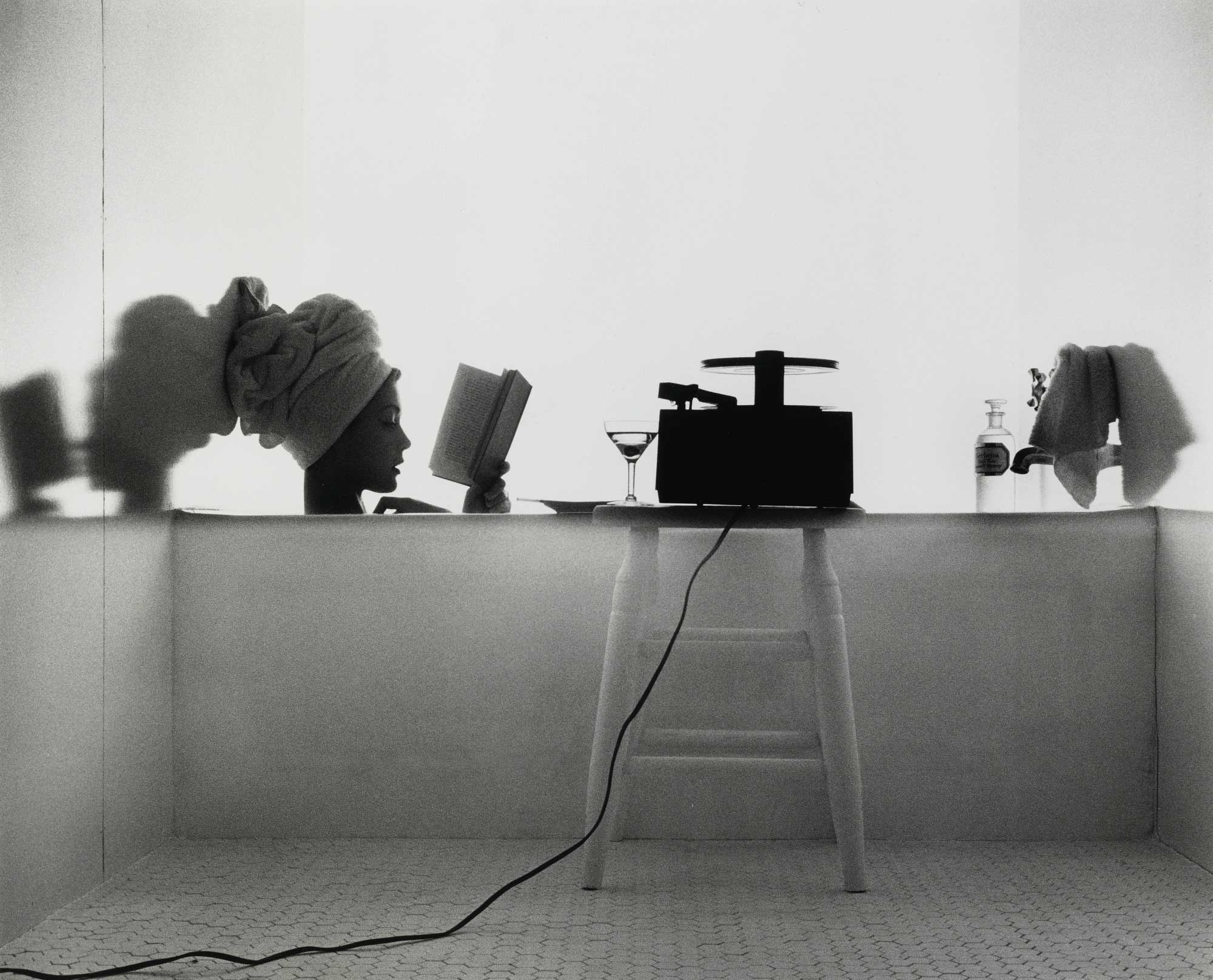This photograph, with its high contrast and semi-silhouetted subject matter, is an example of the strong graphic aesthetic that made Irving Penn stand out amongst his peers in fashion photography and propelled him to international fame. Fascinated by lighting and the dramatic effects that it could achieve, he would often use it to intensify the visual impact of a garment’s shape, sometimes even at the expense of detail. In this photograph Penn used lighting to delineate the accoutrements of a civilised summer bath.
The photograph was taken for the June 1950 issue of American Vogue, and was featured in an article entitled Vogue’s Eye View of 90 Summer Days – a curated guide to books and music. 1950 was a key year for Penn. He married Lisa Fonssagrives, another leading model; opened his own studio in New York; and secured his first black and white cover for Vogue. Published in April, and again featuring Jean Patchett, it was a breakthrough for Penn and a clear endorsement of his aesthetic from the magazine – Vogue had published nothing but colour covers since 1932. Jean Patchett was one of the first internationally famous models, and was a particular favourite of Penn who began working with her as soon as she signed with the Eileen Ford modelling agency in 1948. She appeared on over 40 magazine covers in her life, and was photographed frequently by Penn, Horst P. Horst, Richard Avedon, Erwin Blumenfeld, Cecil Beaton, and Norman Parkinson. When she died in 2002 Penn described her as “a young American Goddess in Paris couture.”
Sought after both because of his lasting influence as a photographer, and because of the singular quality of his printing, Penn’s prints were immaculately produced. From the 1980s onwards, they helped to define the industry standard for print editioning and authentication. Each print is carefully recorded and annotated, and amongst the myriad ink stamps on the reverse is always one that guarantees the total number of prints released of each image
(By Flora La Thangue)
